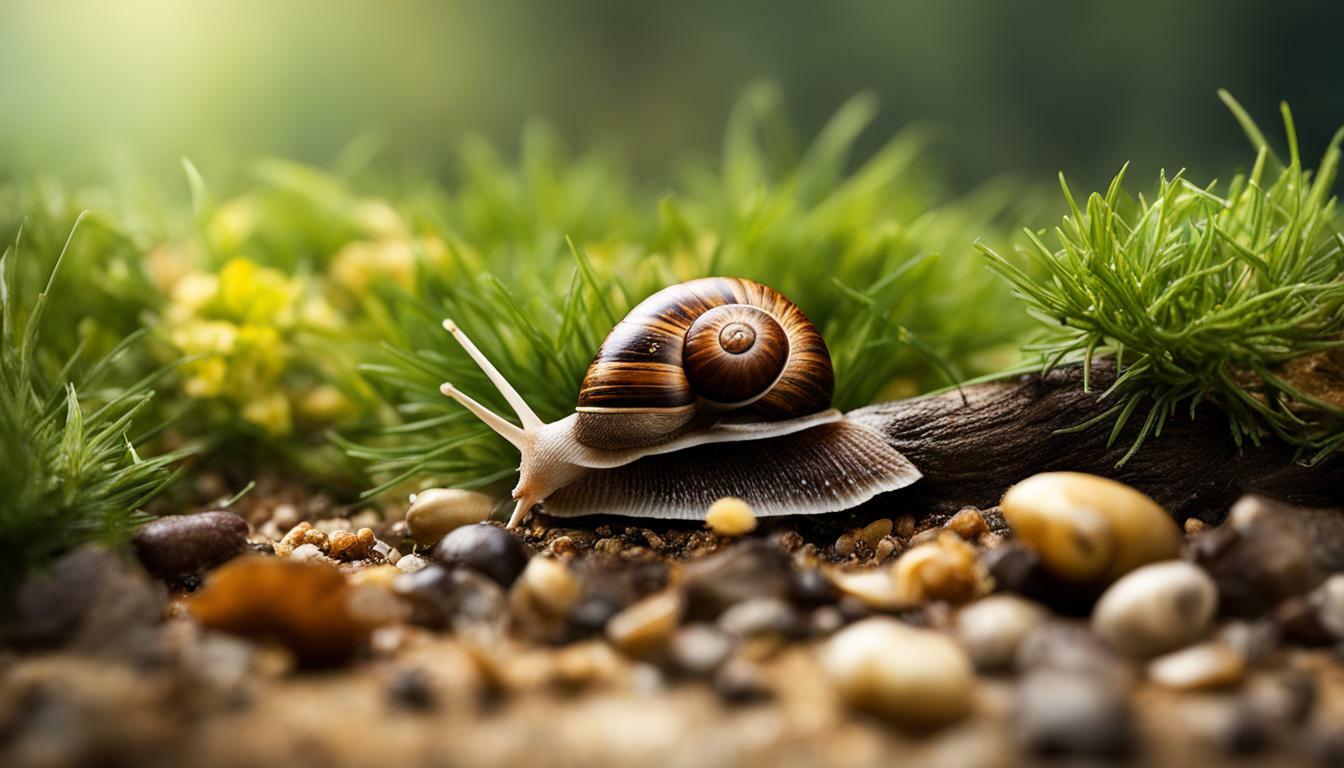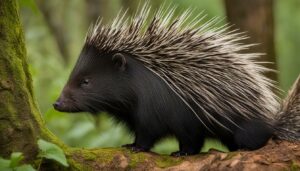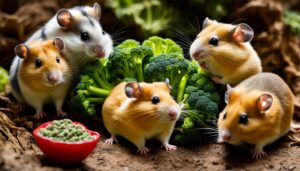If you’ve ever wondered about the diet of mice and whether they have a taste for snails, you’re in the right place. Mice do eat snails and slugs if they come across them, although their preferred diet consists of plant-based foods such as seeds and grass. However, snails can carry harmful parasites and if they have ingested slug pellets, the poison can be passed on to mice and other animals. Slug pellets contain metaldehyde, a toxic toxin that can lead to paralysis and death in rats and mice. Rodents, including mice, are opportunistic feeders and will eat slugs if they are hungry enough. Mice can also be attracted to snail bait, which is made of bran, apple, molasses, and metaldehyde, and can be harmful to them. Additionally, rats and mice can die from secondary poisoning if they eat slugs that have ingested slug pellets. It is important to consider the potential dangers of using slug pellets in the garden and to use pet-friendly alternatives. Other predators of snails and slugs in the garden include cats, snakes, rats, squirrels, owls, hawks, lizards, dogs, skunks, raccoons, foxes, and vultures.
Key Takeaways:
- Mice do eat snails and slugs if they come across them, but it is not their preferred diet.
- Snails can carry harmful parasites and may have ingested poisonous slug pellets, which can affect mice and other animals.
- Slug pellets contain metaldehyde, a toxic toxin that can lead to paralysis and death in rodents.
- Mice can be attracted to snail bait, which can be harmful to them.
- Using pet-friendly alternatives to slug pellets is important to protect mice and other animals.
The Diet of Mice
Before understanding if mice eat snails, it’s important to know what they typically prefer to feast on. These small rodents have a diverse diet, but their primary food source consists of plant-based foods such as seeds and grass. Mice are known for their preference for grains, including corn, wheat, and oats. They also enjoy consuming various types of seeds, including sunflower seeds and pumpkin seeds. Additionally, mice have a fondness for fresh grass and will often nibble on it when available.
While mice primarily rely on plant-based foods, they are opportunistic feeders and will consume a wide range of items if they come across them. This includes insects, small invertebrates, and yes, snails. If mice encounter snails or slugs during their foraging, they may not pass up the opportunity for a quick snack. However, it’s important to note that snails can carry harmful parasites, and if they have consumed slug pellets, the poison can be passed on to mice and other animals.
It’s worth mentioning that slug pellets, which are commonly used to control snail and slug populations in gardens, can be dangerous for mice. These pellets often contain metaldehyde, a toxic substance that can lead to paralysis and death in rats and mice. Therefore, if you have mice in your garden, it’s essential to consider the potential dangers of using slug pellets and explore pet-friendly alternatives to keep both your garden and the mice safe.
| Predators of Snails and Slugs |
|---|
| Cats |
| Snakes |
| Rats |
| Squirrels |
| Owls |
| Hawks |
| Lizards |
| Dogs |
| Skunks |
| Raccoons |
| Foxes |
| Vultures |
It’s not just mice that prey on snails and slugs in the garden. A variety of natural predators play a role in controlling their populations. These include cats, snakes, rats, squirrels, owls, hawks, lizards, dogs, skunks, raccoons, foxes, and vultures. These animals help maintain a balance in the ecosystem by keeping snail and slug numbers in check.
Mice and Snails
While mice are not known for having a predilection for snails, they can still be opportunistic about their feeding habits. In general, mice prefer a diet consisting primarily of plant-based foods such as seeds and grass. However, if a mouse comes across a snail or slug, it may not hesitate to indulge.
It’s important to note that snails can carry harmful parasites, and if they have ingested slug pellets, the poison can be passed on to mice and other animals. Slug pellets contain metaldehyde, a toxic toxin that can lead to paralysis and death in rats and mice. These rodents, including mice, are known for being opportunistic feeders and will resort to eating slugs if they are hungry enough.
Mice can also be attracted to snail bait, which is often made of bran, apple, molasses, and metaldehyde. However, the bait can be harmful to them. Additionally, rats and mice can die from secondary poisoning if they consume slugs that have ingested slug pellets. Therefore, it’s crucial to consider the potential dangers of using slug pellets in the garden and opt for pet-friendly alternatives.
Other Predators of Snails and Slugs
Mice are not the only natural predators of snails and slugs in the garden. Other animals, such as cats, snakes, rats, squirrels, owls, hawks, lizards, dogs, skunks, raccoons, foxes, and vultures, also prey on these slimy creatures. It’s essential to maintain a balanced ecosystem and preserve biodiversity, allowing these natural predators to assist in controlling the population of snails and slugs.
| Predators of Snails and Slugs |
|---|
| Cats |
| Snakes |
| Rats |
| Squirrels |
| Owls |
| Hawks |
| Lizards |
| Dogs |
| Skunks |
| Raccoons |
| Foxes |
| Vultures |
Potential Dangers and Considerations
It’s important to be aware of the potential risks and dangers that mice may encounter if they eat snails. While mice are primarily herbivores and prefer plant-based foods like seeds and grass, they are known to consume snails and slugs if they come across them. However, snails can carry harmful parasites that can pose a threat to mice and other animals.
One particular concern is the presence of slug pellets, which are commonly used to control snail and slug populations in gardens. These pellets contain metaldehyde, a toxic toxin that can lead to paralysis and death in rodents, including mice. If a mouse ingests snails that have consumed slug pellets, they can also suffer from secondary poisoning, further increasing the potential for harm.
Therefore, it is crucial to exercise caution when using slug pellets in your garden and consider more pet-friendly alternatives. By opting for natural pest control methods, you can help protect not only mice but also other wildlife from the risks associated with metaldehyde poisoning.
| Potential Dangers for Mice | Precautions |
|---|---|
| Harmful parasites carried by snails | Regularly inspect and clean your garden to minimize snail populations. |
| Slug pellets containing metaldehyde | Choose pet-friendly alternatives or natural pest control methods. |
| Secondary poisoning from ingesting snails with slug pellets | Avoid using slug pellets altogether to reduce the risk. |
It’s worth noting that mice are not the only natural predators of snails and slugs in the garden. Other creatures like cats, snakes, rats, squirrels, owls, hawks, lizards, dogs, skunks, raccoons, foxes, and vultures also contribute to keeping their populations in check. Creating a balanced ecosystem that allows these predators to thrive can help control snail and slug populations without resorting to potentially harmful methods.
Attraction to Snail Bait
Mice can be lured by snail bait, but it’s essential to be cautious about the harmful ingredients it might contain. While snail bait is commonly used in gardens to control snail and slug populations, it can pose a danger to mice and other small animals if they consume it. Snail bait typically consists of a mixture of bran, apple, molasses, and metaldehyde, a toxic substance that can be lethal to rodents.
Metaldehyde is a powerful toxin that can lead to paralysis and death in rats and mice. If mice come across snail bait that contains this harmful ingredient, they might be tempted to consume it. However, ingesting metaldehyde can have severe consequences for these small creatures. That’s why it’s crucial to take steps to protect mice and other wildlife from the dangers of snail bait.
To ensure the safety of mice and other small animals, it’s important to consider pet-friendly alternatives to traditional snail bait. These alternatives are designed to be effective in controlling snail and slug populations while minimizing the risk of harm to other creatures. Some pet-friendly options include using copper barriers, handpicking snails and slugs, creating a welcoming habitat for natural predators, and employing organic pest control methods.
| Predators of Snails and Slugs |
|---|
| Cats |
| Snakes |
| Rats |
| Squirrels |
| Owls |
| Hawks |
| Lizards |
| Dogs |
| Skunks |
| Raccoons |
| Foxes |
| Vultures |
In addition to mice, there are several other natural predators of snails and slugs in the garden. Cats, snakes, rats, squirrels, owls, hawks, lizards, dogs, skunks, raccoons, foxes, and vultures are just a few examples of animals that prey on these garden pests. Encouraging the presence of these natural predators can help control snail and slug populations without resorting to harmful snail bait.
With a little caution and consideration, it’s possible to manage snail populations in your garden while also protecting mice and other wildlife. By opting for pet-friendly alternatives to snail bait and promoting a natural balance in your garden ecosystem, you can create a harmonious environment where both plants and animals can thrive.
Predators of Snails and Slugs
Mice are not the only ones who have a taste for snails – there are several other creatures in the animal kingdom that feast on these slimy critters. In fact, snails and slugs have a wide range of natural predators, especially in the garden. These predators play a vital role in controlling the population of these mollusks and maintaining a healthy ecosystem.
One of the most common garden predators of snails and slugs is the humble frog. Frogs are known for their voracious appetite for insects, including snails and slugs. They use their sticky tongues to catch these slow-moving creatures and enjoy a satisfying meal. Additionally, toads and lizards also contribute to the natural control of snails and slugs in the garden.
Other predators that help keep populations of snails and slugs in check include birds such as ducks, chickens, and blackbirds. These feathered friends have a keen eye for spotting slugs and snails, which they swiftly gobble up. These birds are especially helpful in agricultural settings and are often encouraged to roam freely to keep garden pests at bay.
| Garden Predators of Snails and Slugs | |
|---|---|
| Cats | Snails and slugs are an occasional treat for these curious felines. |
| Snakes | Snakes use their stealth and lightning-fast strikes to catch and consume snails and slugs. |
| Rats | Rats are opportunistic feeders and will feast on snails if they come across them. |
| Squirrels | Squirrels have been observed munching on snails, particularly in urban areas. |
| Owls and Hawks | These birds of prey have sharp talons and keen eyesight to help them catch and devour snails and slugs. |
| Lizards | These agile reptiles hunt and consume snails and slugs as part of their diet. |
| Dogs | Some dogs have been known to nibble on snails, although it is not a common occurrence. |
| Skunks | Skunks have a varied diet and will include snails and slugs in their meals. |
| Raccoons | These nocturnal creatures are known to enjoy a feast of snails and slugs. |
| Foxes | Foxes have sharp teeth and a keen sense of smell, allowing them to hunt down snails and slugs with ease. |
| Vultures | These scavengers will happily feed on deceased snails and slugs, helping to clean up the environment. |
Conclusion
In conclusion, while mice primarily prefer plant-based foods, they can eat snails if they come across them, although it’s important to consider the potential dangers and risks involved.
Mice are opportunistic feeders, and if they are hungry enough, they will consume snails and slugs. However, it’s crucial to be aware that snails can carry harmful parasites, and if they have ingested slug pellets, the poison can be passed on to mice and other animals. Slug pellets contain metaldehyde, a toxic toxin that can lead to paralysis and death in rodents.
To minimize the risks, it’s essential to consider using pet-friendly alternatives to traditional slug pellets in your garden. These alternatives can help protect both mice and other animals from the potential dangers associated with snail bait. It is also important to be cautious when using any kind of chemicals or pesticides in your garden to ensure the safety of your pets and the environment.
It’s worth noting that mice are not the only natural predators of snails and slugs. Other garden predators, such as cats, snakes, rats, squirrels, owls, hawks, lizards, dogs, skunks, raccoons, foxes, and vultures, also play a role in controlling the snail population. So, if you have a garden, there’s a good chance that nature has its own way of keeping snail numbers in check.
FAQ
Do mice eat snails?
Yes, mice do eat snails if they come across them, although their preferred diet consists of plant-based foods such as seeds and grass.
Are snails harmful to mice?
Snails can carry harmful parasites, and if they have ingested slug pellets, the poison can be passed on to mice and other animals.
What is in slug pellets that can harm mice?
Slug pellets contain metaldehyde, a toxic toxin that can lead to paralysis and death in rats and mice.
Are mice opportunistic feeders when it comes to slugs?
Yes, rodents, including mice, are opportunistic feeders and will eat slugs if they are hungry enough.
Can mice be attracted to snail bait?
Yes, mice can be attracted to snail bait, which is made of bran, apple, molasses, and metaldehyde, and can be harmful to them.
Is it possible for rats and mice to die from secondary poisoning?
Yes, rats and mice can die from secondary poisoning if they eat slugs that have ingested slug pellets.
What other animals prey on snails and slugs in the garden?
Other predators of snails and slugs in the garden include cats, snakes, rats, squirrels, owls, hawks, lizards, dogs, skunks, raccoons, foxes, and vultures.




